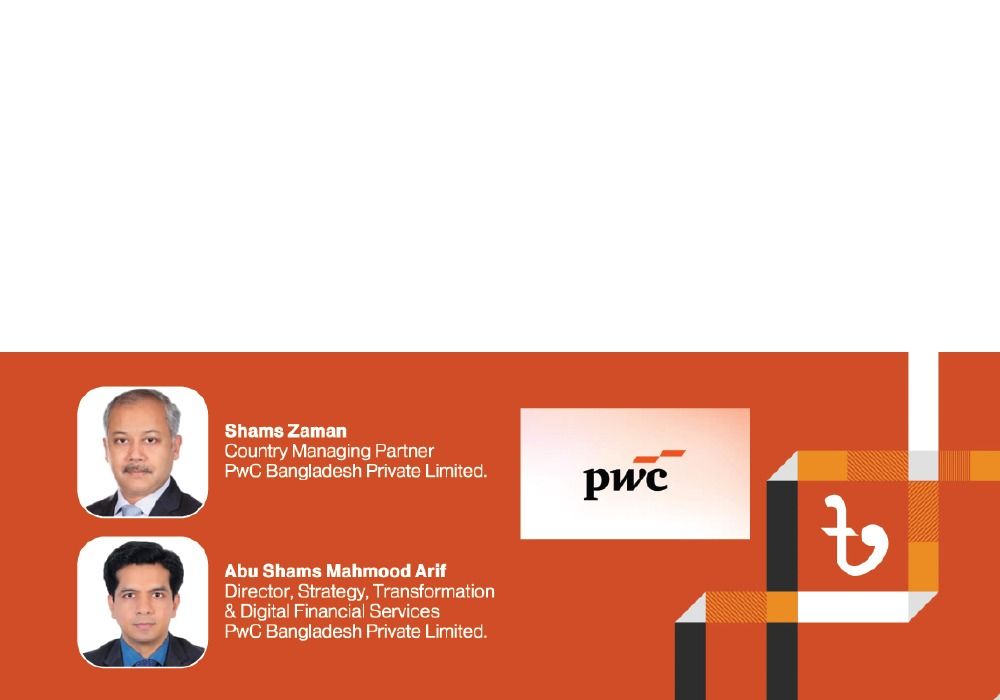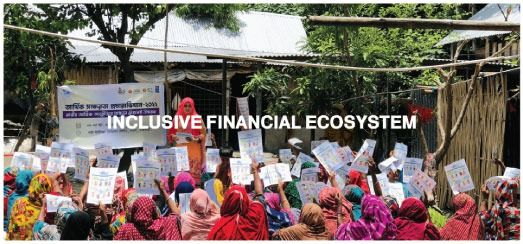![]() Admin
Admin
![]() September 22, 2025
September 22, 2025
![]() (0) Comment
(0) Comment

![]() Admin
Admin
![]() September 22, 2025
September 22, 2025
![]() (0) Comment
(0) Comment
Bangladesh, the second-largest economy in South Asia, is experiencing a significant digital transformation, evolving from a cash-dependent economy to a vibrant cashless society. Through mobile financial services (MFS), digital wallets, and fintech advancements, countless Bangladeshis now access financial resources previously unavailable, promoting financial inclusion, economic expansion, technological adaptation, regulatory evolution and durability.

Inclusive Financial Ecosystem
Accessible digital finance platforms form the bedrock of this cashless evolution and have transformed money transfers, payments, and savings, particularly in rural areas where traditional banking was once out of reach and mostly micro-credit was providing access to capital. MFS lets farmers get crop payments straight to their devices reducing handling of physical money. Females are independently overseeing family budgets, as women's MFS adoption surges. This strengthening reaches microfinance, where electronic payments are transforming loans and collections, aligning with the authority's aim for a cash-free system.
The rise of cashless transactions has been a boon for small and medium enterprises (SMEs) including brick-and-mortar setups. Businesses can now accept payments via QR codes, mobile apps, and online banking, reducing their dependence on cash. This shift minimizes theft risks, simplifies accounting, and enhances financial management. E-commerce platforms in Bangladesh have thrived due to seamless digital payments, allowing entrepreneurs to reach customers nationwide. Freelancers and gig workers also benefit, as they receive international payments quickly and securely through digital channels, contributing to the country's foreign exchange earnings.
Challenges and Way Forward
Bangladesh is advancing toward a cashless economy, but several challenges remain. Addressing them with effective solutions is essential for inclusive digital transformation.
 1. Digital Divide
1. Digital Divide
Many rural and marginalized people lack smartphones, internet access, or digital literacy, creating inequality in access to services.
Digital divide could be lessened by expanding affordable internet, distributing low-cost devices, running nationwide digital literacy & targeted outreach programs and ensuring women-friendly services.
 2. Digital & Financial Awareness and Trust
2. Digital & Financial Awareness and Trust
A part of the population is hesitant to use digital finance due to fear of fraud, scams, and lack of knowledge. Limited knowledge among rural and older populations leads to errors and reluctance to adopt digital tools.
Launching of nationwide education and awareness campaigns, developing transparent and user-friendly systems, and ensuring reliable and responsive customer support would add value.
 3. Infrastructure Limitations
3. Infrastructure Limitations
Poor mobile network coverage, low internet bandwidth and limited financial agents in rural areas reduce accessibility.
To address the situation, investing in telecom infrastructure, subsidizing affordable devices through public-private partnerships and expanding agent networks could be useful.
 4. Policy & Compliance
4. Policy & Compliance
Consumer protection, data privacy, and anti-money laundering need to remain high on the agenda. Lack of interoperability between platforms causes friction and high merchant costs. Moreover, consumer protection and data privacy need to be looked at.
Developing unified standards and supportive policies, enforcing strict compliance measures and promoting standardized Bangla QR adoption at all stages of commerce could be beneficial.
 5. Cybersecurity and Fraud Risks
5. Cybersecurity and Fraud Risks
Cases of scams, hacking, phishing, and identity theft erode public confidence in digital platforms. Scams and breaches erode trust, with rising fraud cases.
For dealing with the same, strengthening of cybersecurity, implementing biometric verification and advanced encryption, launching of cybersecurity training and investing in Al-driven fraud detection systems would help.
 6. Economic, Cultural and Cost Barriers
6. Economic, Cultural and Cost Barriers
Cultural cash preferences and gender norms limit access and slow down digital adoption. Transaction fees discourage low-income users from fully embracing digital finance.
Rationalizing service charges and encouraging competition to lower costs, promoting awareness through merchants and nurturing gender-inclusive initiatives are likely to set this right.
 7. Sustainable & Coordinated Innovation Needs
7. Sustainable & Coordinated Innovation Needs
Financial innovations mostly remained limited to payments and money transfers, with fewer long-term solutions in areas like digital credit, micro- insurance, blockchain-based security, or Al-driven financial planning.
Fostering a culture of continuous innovation by encouraging fintech startups, sandboxes, and public-private partnerships could be of use. Furthermore, investment in research and development, promotion of open banking, and collaboration between banks, telecom operators, and technology firms can drive new products that are both inclusive and sustainable could pave the way forward.

Conclusion
As Bangladesh moves toward becoming a digital economy, the journey to a fully cashless society requires innovation, inclusivity, and sustainability. Digital finance empowers citizens by making money management easier, safer, and more transparent and enables the unbanked to access essential services, supports SMEs, improves remittances, and enhances governance. The future of a cashless Bangladesh lies in building an inclusive, secure, and innovative digital financial ecosystem. By embracing advanced technologies, expanding access, and ensuring trust, Bangladesh can empower every citizen to participate in its economic growth. The journey toward a cashless Bangladesh is not just a vision for the future; it is an ongoing process of empowerment, growth, and shared prosperity.